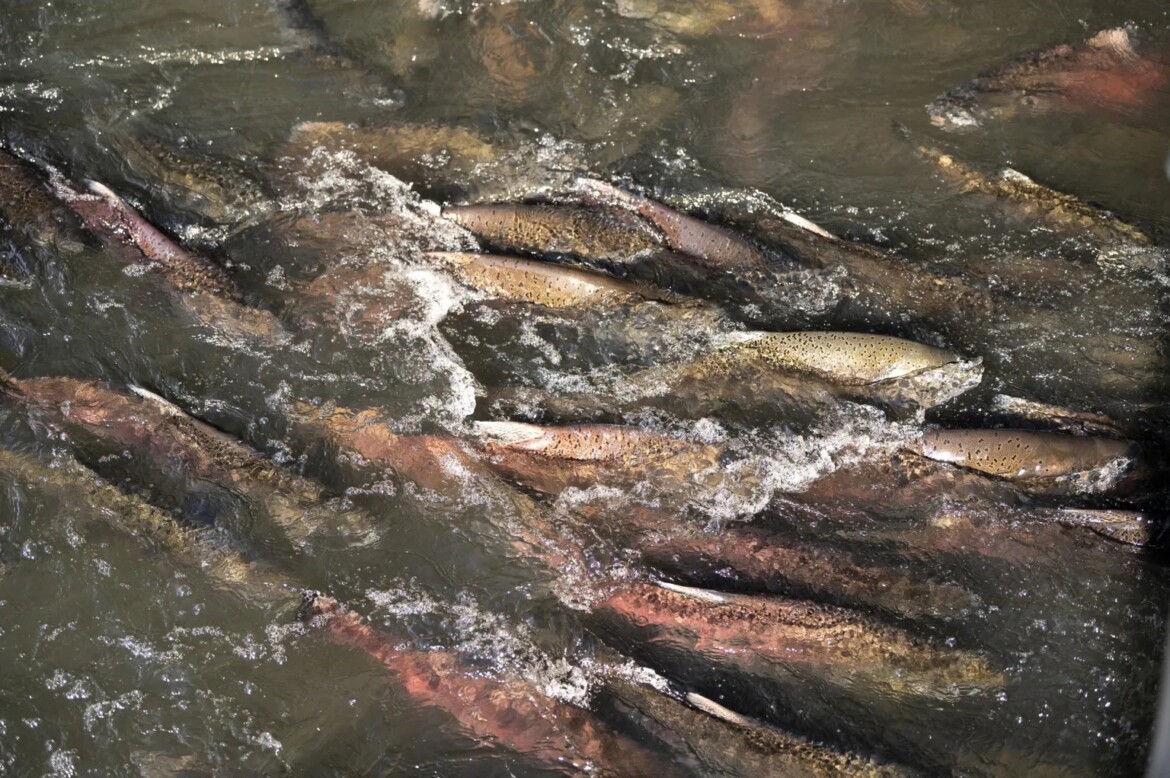The East Bay Municipal Utility District said this week the 2024-25 fall run of Chinook salmon currently underway on the Mokelumne River has already set a new record for the most salmon returning to spawn.
More than 30,000 fish have been counted, with hundreds more arriving daily from the Pacific Ocean. It’s the largest salmon return on the Mokelumne since record keeping began in 1940, surpassing last year’s record-setting count of 28,698 Chinook.
There’s still several weeks left in this spawning season.
The Mokelumne River watershed drains 2,143 square miles in parts of Alpine, Amador, Calaveras, San Joaquin and Sacramento counties, through the Delta and to the Pacific through San Francisco Bay.
It’s also the primary drinking water source for more than 1.4 million EBMUD customers in Alameda and Contra Costa counties. EBMUD said in a statement the agency is dedicated to balancing customers’ water needs with environmental protection and river stewardship.
“I’m proud of EBMUD’s decades-long dedication to sustaining the health of the Mokelumne River habitat and investing in fish hatchery operations,” EBMUD board president Lesa McIntosh said in the statement. “This historic salmon run is a testament to our science-driven management, cooperative relationships with neighbors on the river, and our collaboration with local, state and federal partners to enhance spawning grounds, operate our hatchery effectively, and protect vital natural resources.”
EBMUD manages river flows, enhances habitat, and funds the Mokelumne River Hatchery, which is operated with the California Department of Fish and Wildlife.
The Mokelumne only contributes about 3 percent of the freshwater flow into the Sacramento-San Joaquin Delta, yet its salmon population makes up as much as 50 percent of the commercial catch off the California coast, EBMUD said.
Salmon returns are counted every year during the spawning season, which typically runs from September to January.
The salmon return to their home waters in the Mokelumne to reproduce and die after spending two to five years maturing in the Pacific Ocean. The pattern is a significant stage in the salmon life cycle and a strong indicator of the habitat’s ecological health and the population’s survival rate.
EBMUD biologists recorded the passage of 3,824 migrating fish on Oct. 16, the largest one-day salmon count in more than 30 years. Passage is measured as salmon pass through a fish ladder at a small irrigation impoundment owned by the Woodbridge Irrigation District in San Joaquin County.

The district said the statewide closure of California’s 2023 and 2024 commercial and recreational salmon fishing seasons to protect the Central Valley fall-run Chinook population has certainly had a positive impact on the number of fish coming back to freshwater.
The commercial and recreational salmon fishing fleet, which funds the production of ocean enhancement fish at the hatchery, forewent both seasons and contributed to this year’s success on the Mokelumne.
But there haven’t been similar returns elsewhere in the Central Valley. The Mokelumne hatchery is also supporting the Coleman National Fish Hatchery in Shasta County by providing approximately 3 million eggs this spawning season.
The post EBMUD says current Chinook salmon run on Mokelumne River is largest ever recorded appeared first on Local News Matters.
